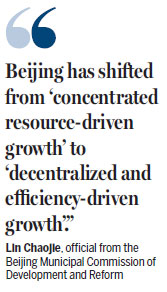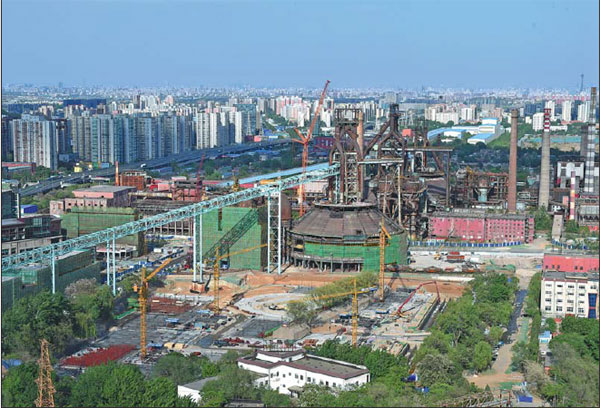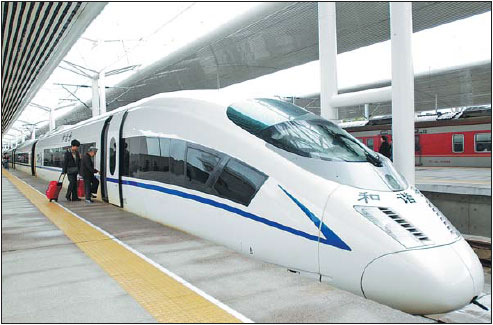Beijing, Tianjin, Hebei regions integrated and complementary
Three areas boost and share growing businesses and networks to better distribute burdens
Beijing has embraced a new stage of development in supply-side reform of economic restructuring and the coordinated development of the Beijing-Tianjin-Hebei region in recent years.
To optimize its industrial structure, the government relocated or closed 1,341 pollution-heavy enterprises between 2013 and 2016 to improve the city's low-quality, chaotic industrial concentration, according to the Beijing Municipal Commission of Economy and Information Technology.
To restructure the economy and support green, sustainable industries, more than 50 percent of enterprises in Beijing are in the modernized industries of electronics, automobiles and healthcare services, according to the commission.
"The coordinated development of the Beijing-Tianjin-Hebei region is a major national strategy of China with great and far-reaching significance. Over the past three years, Beijing has shifted from 'concentrated resource-driven growth' to 'decentralized and efficiency-driven growth'," said Lin Chaojie, an official from the Beijing Municipal Commission of Development and Reform.

Established in 1919, Capital Steel Group, a large State-owned enterprise focusing on iron and steel manufacturing, was among the first to pilot the reform. From 2003 to 2012, Capital Steel had undergone relocation.
In 1994, the enterprise's output reached 8.24 million metric tons a year, ranking first in the country. But with the expansion of Beijing's downtown area, the enterprise's location was no longer in the suburbs.
The pollution problem caused by such a large factory raised concerns. The regional and environmental capacity of the capital began to limit its further development.
In February 2005, the local government approved its relocation project, allowing Capital Steel to construct a new production base in Caofeidian in Tangshan, Hebei province, by the end of 2010.
The project was unprecedented in scale; it involved the relocation of an iron and steel enterprise with a vast annual output and rearrangement than 64,700 employees.
Capital Steel Group made a detailed relocation plan to start new plants in Hebei and transfer employees by reassignment and retirement. By the end of 2010, the relocation project was completed.
The No 3 blast furnace in its factory, the cradle of Capital Steel's industry, will be transformed into a modern museum to showcase the industrial heritage of the enterprise.
To further adapt to the development strategy of "transforming urban services", the company now specializes in the smart parking systems and Internet Plus parking services, providing high-tech solutions to mitigate difficulties in urban parking.
The company is also actively building facilities related to new-energy charging stations, car rental, garage-based photovoltaic power generation as well as power storage.
After Capital Steel Group's relocation, more enterprises joined the relocation queue.
In 2016, 55 zombie enterprises were phased out and more than 2,000 employees were relocated. In 2017, Beijing plans to close another 50 zombie enterprises, according to the Beijing Municipal Commission of the State-owned Assets Supervision and Administration.
The relocation cost will be shared by the government and the enterprises. Funds are raised through multiple channels to cover the cost of employee relocation, transfer of non-operating assets, bankruptcy and liquidation, according to the commission.
The rights and interests of employees were respected, ensuring stability throughout the process. In the relocation process, all due wages were paid and the process was conducted in a stable and orderly manner.
Between 2015 and 2016, the total contract value for transfers of technology from Beijing to Tianjin hit 11.15 billion yuan ($1.63 billion), increasing 34.2 percent year-on-year, with another 15.47 billion yuan in technology transferred to Hebei, up 38.7 percent, according to the Beijing Municipal Commission of Development and Reform.
Beijing also decentralized many of its non-capital functions and aligned development of the Beijing-Tianjin-Hebei region by building up a more integrated traffic network.
In 2015, the Second Beijing-Tianjin Intercity Express Rail's plan was approved and started construction.
The Beijing-Taipei Expressway's Beijing section was completed in December 2016. The Beijing-Bazhou Railway and Beijing-Tangshan intercity rails have begun operation and the main structure for the main terminal of Beijing's new airport has been completed.
"In the following 15 to 20 years, we will build 3,000 km of railways by investing 65 billion yuan," said Zhao Yang, an official at the Beijing Municipal Committee of Transportation.
liyou@chinadaily.com.cn
|
Former facilities of Beijing's Capital Steel will be transformed into an industrial museum.Yuan Dexiang / For China Daily |
|
Passengers take the Beijing-Tianjin Intercity Express Rail to Beijing.Xiao Chunhu / For China Daily |
(China Daily 06/23/2017 page12)
















